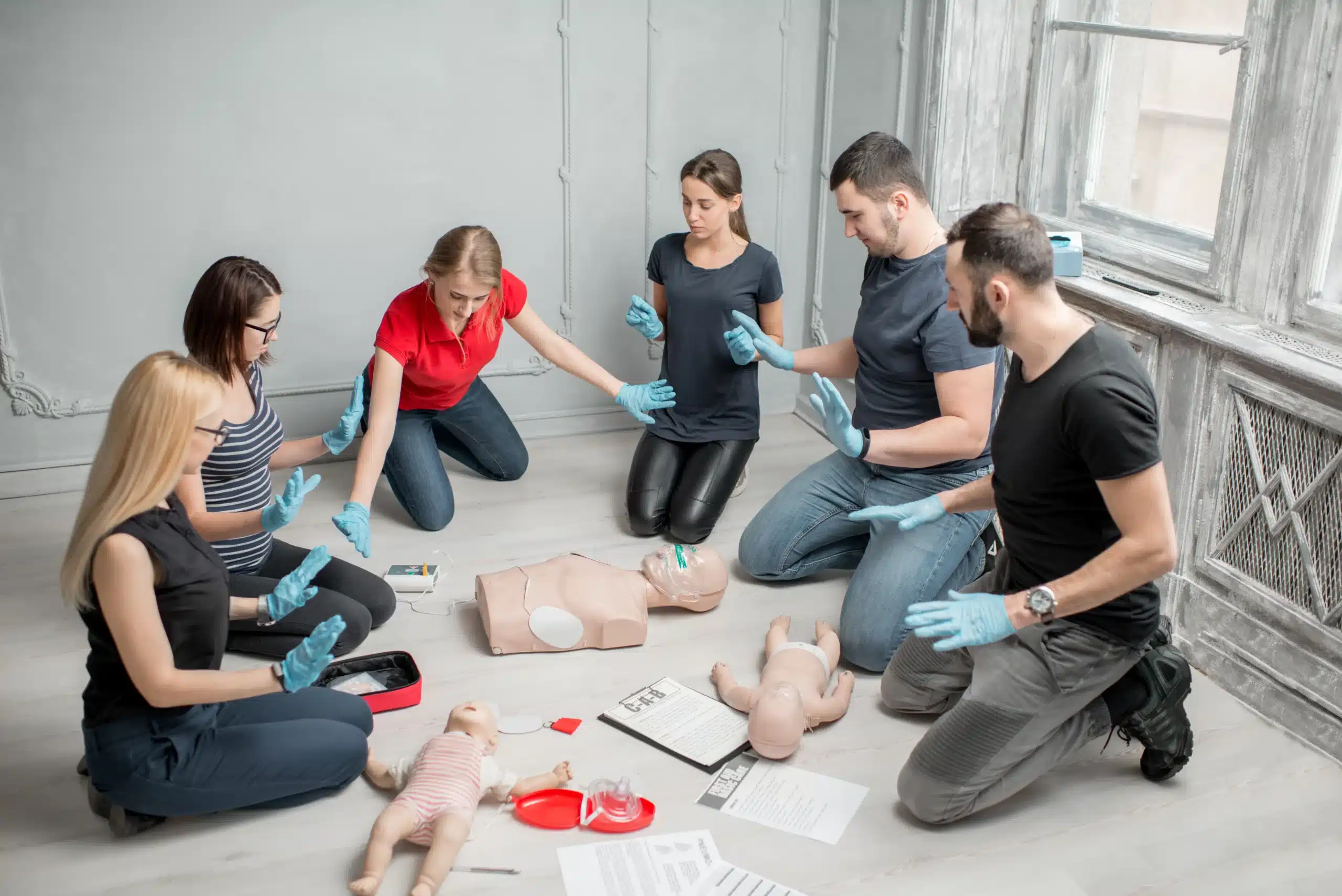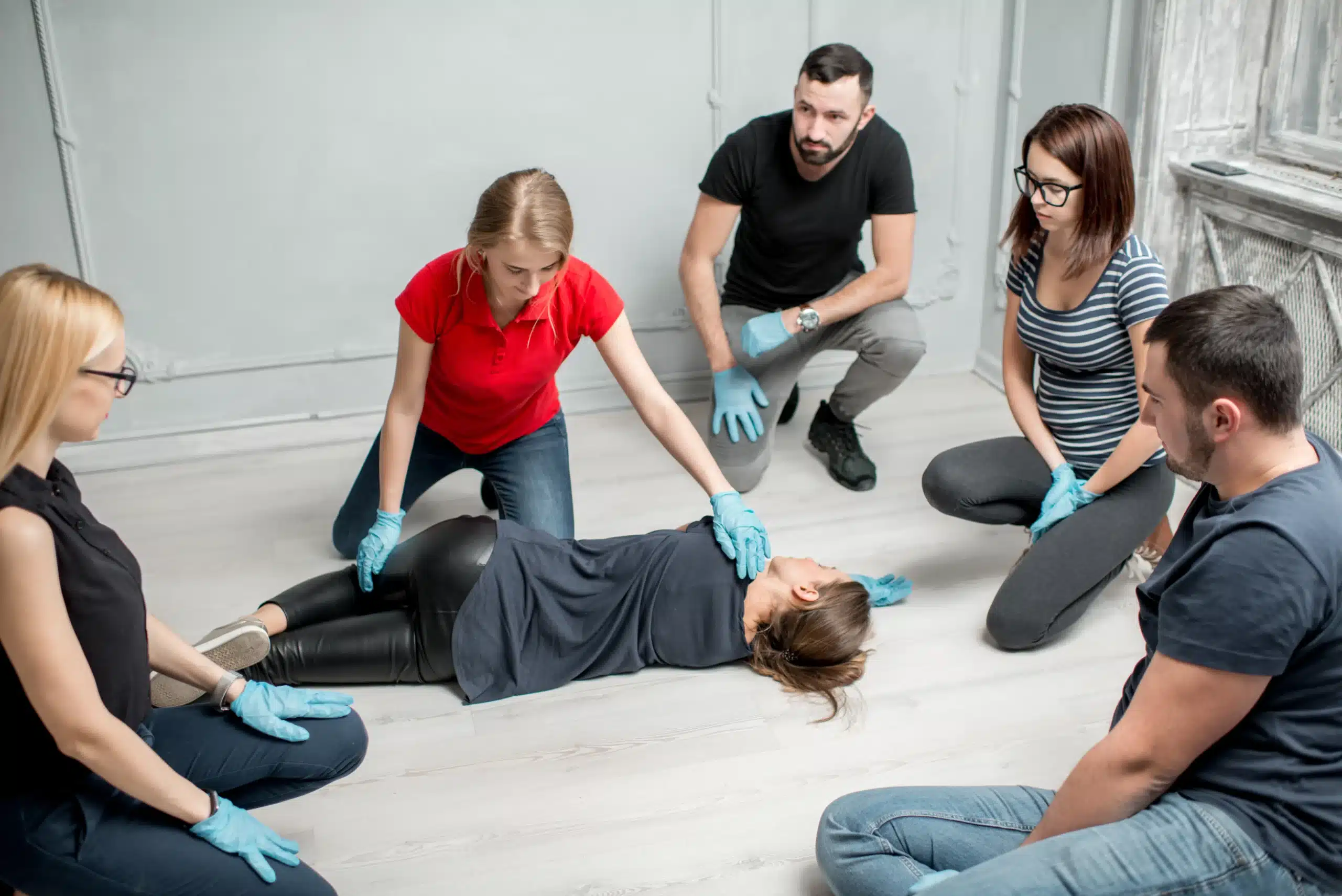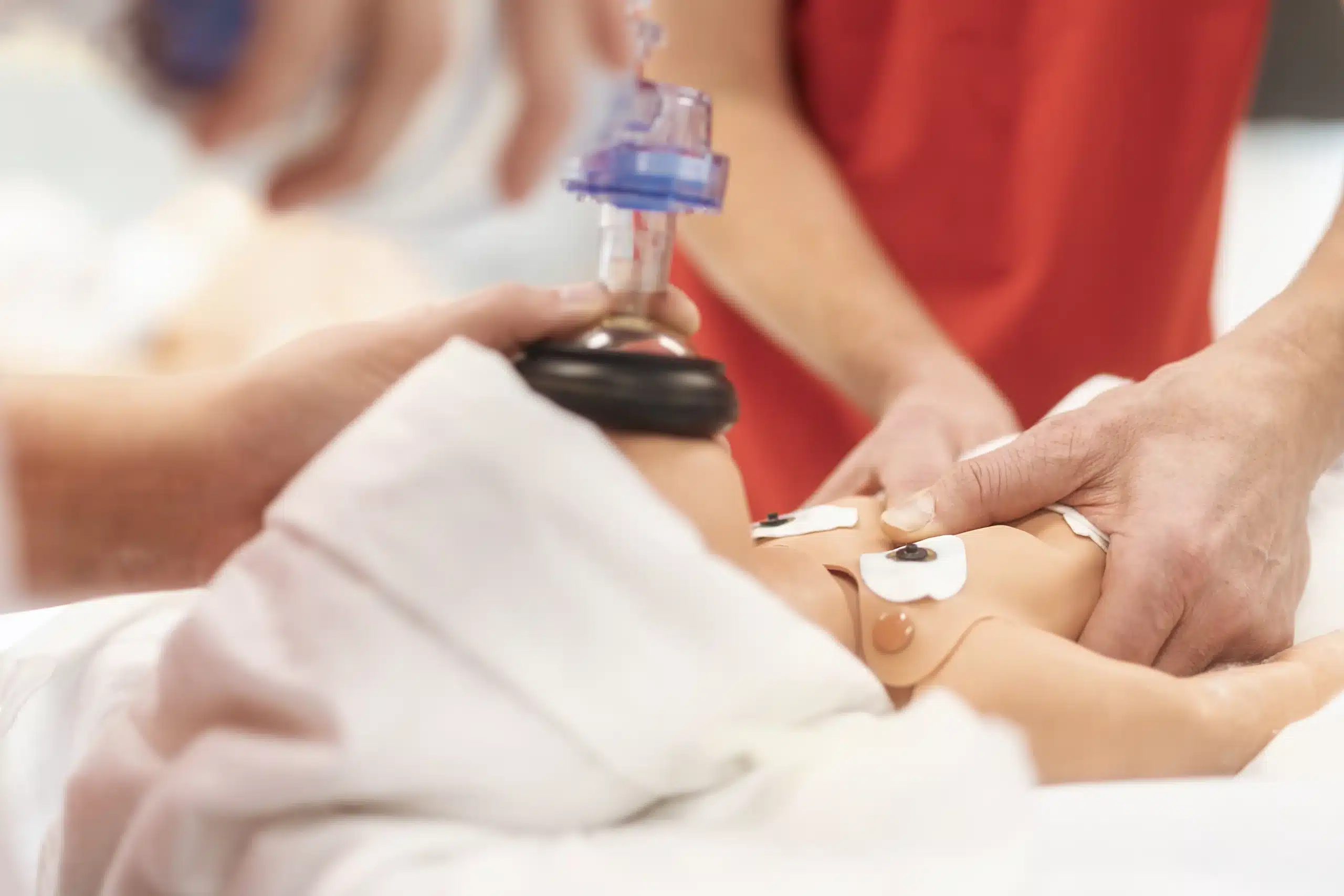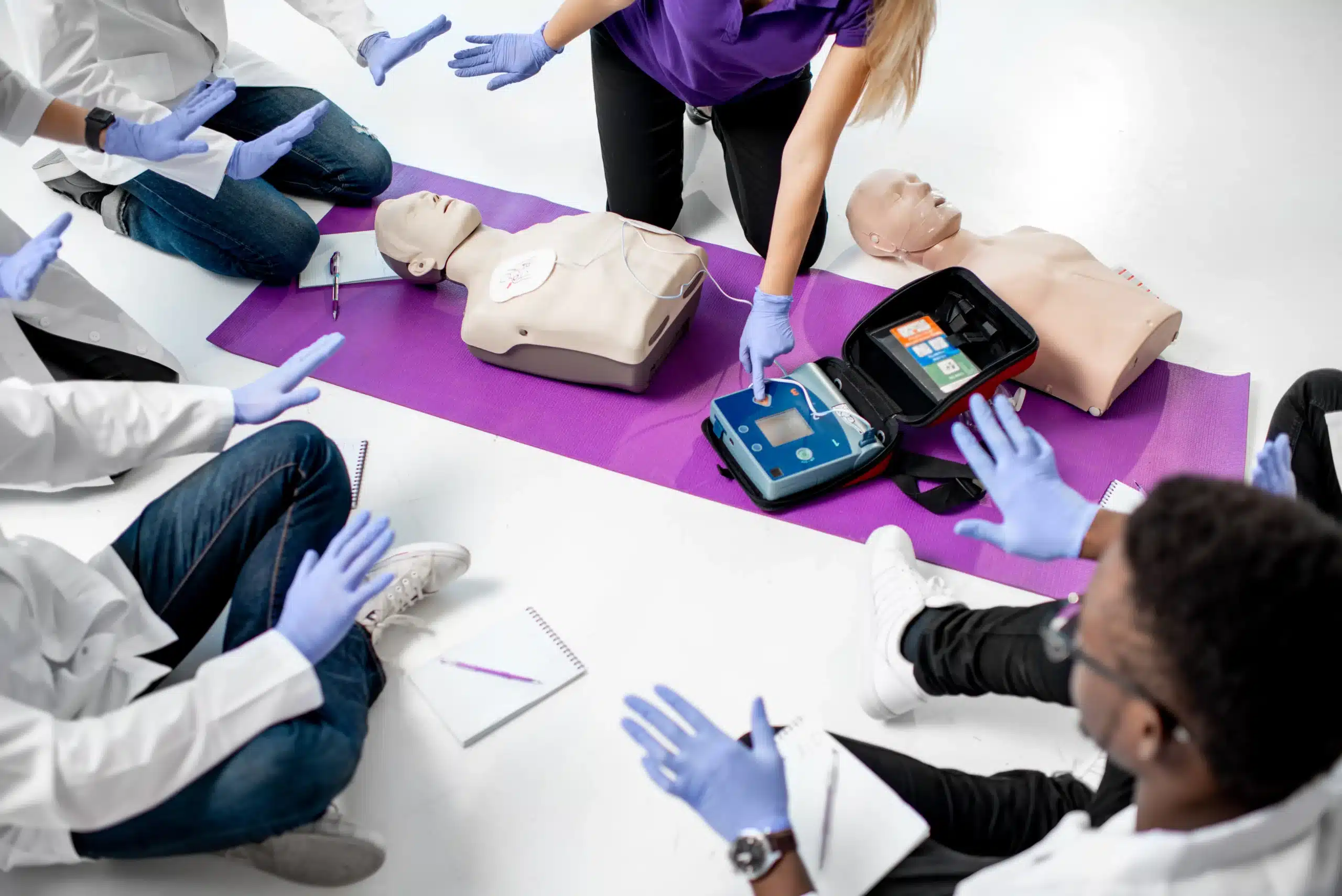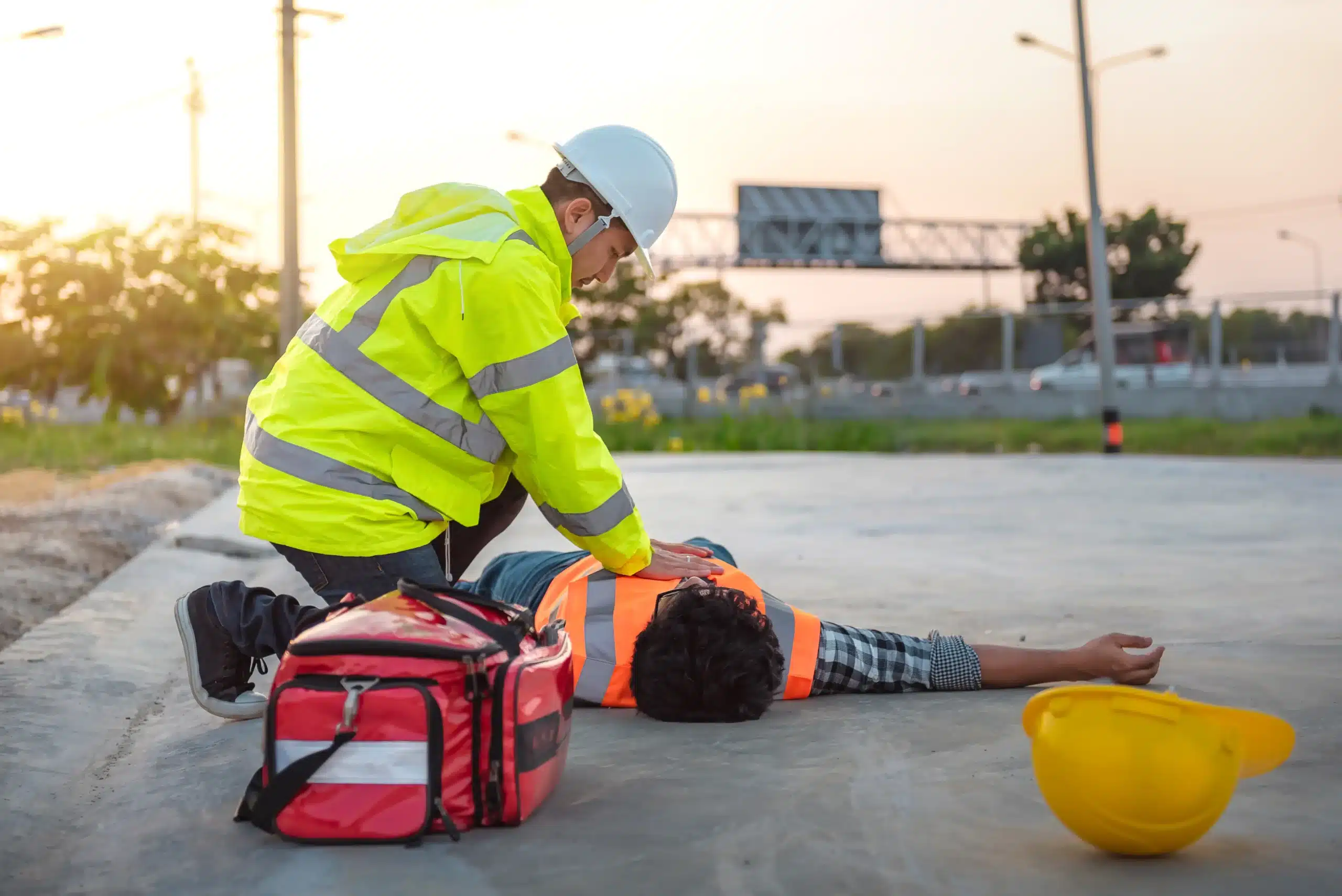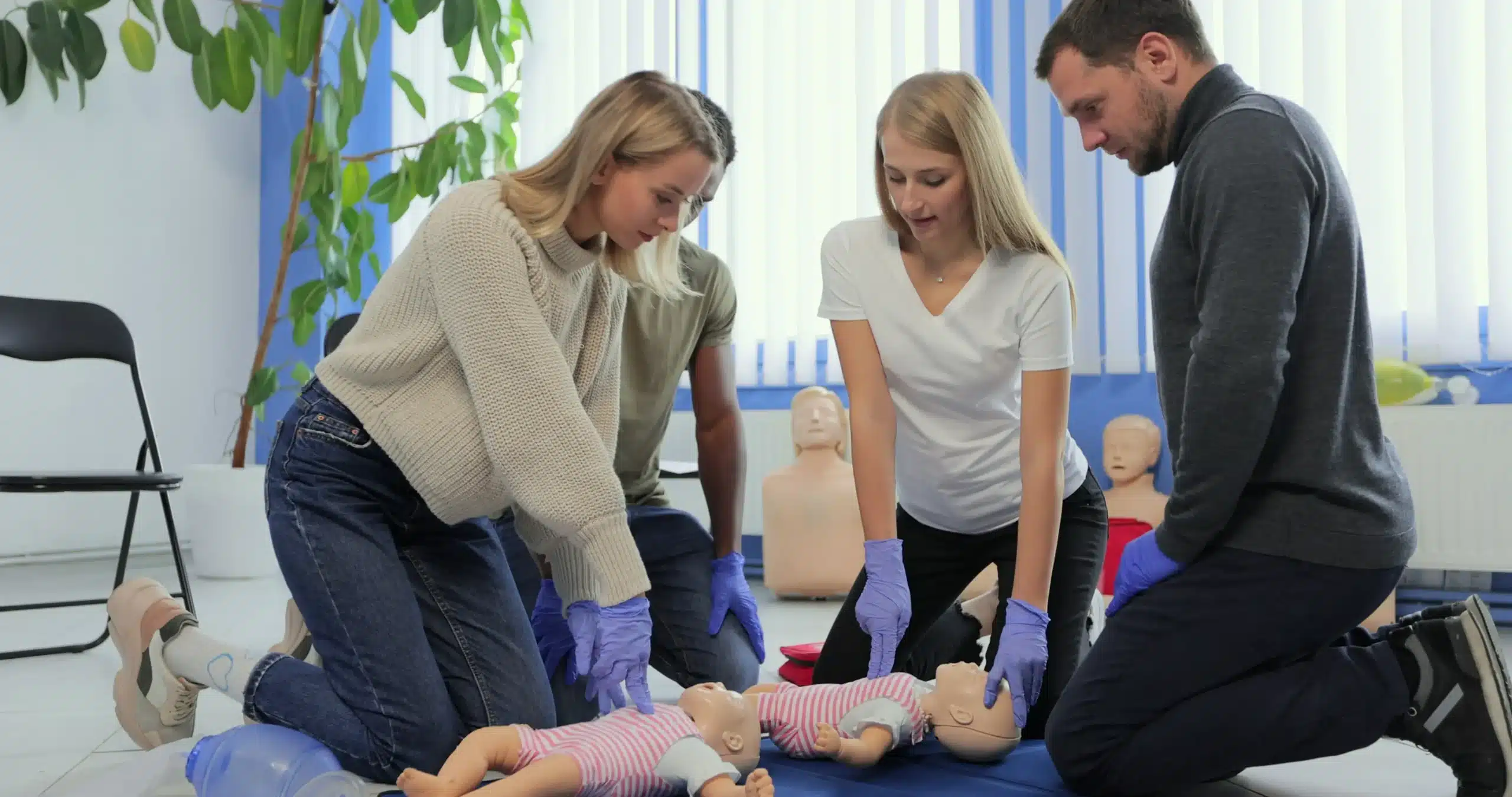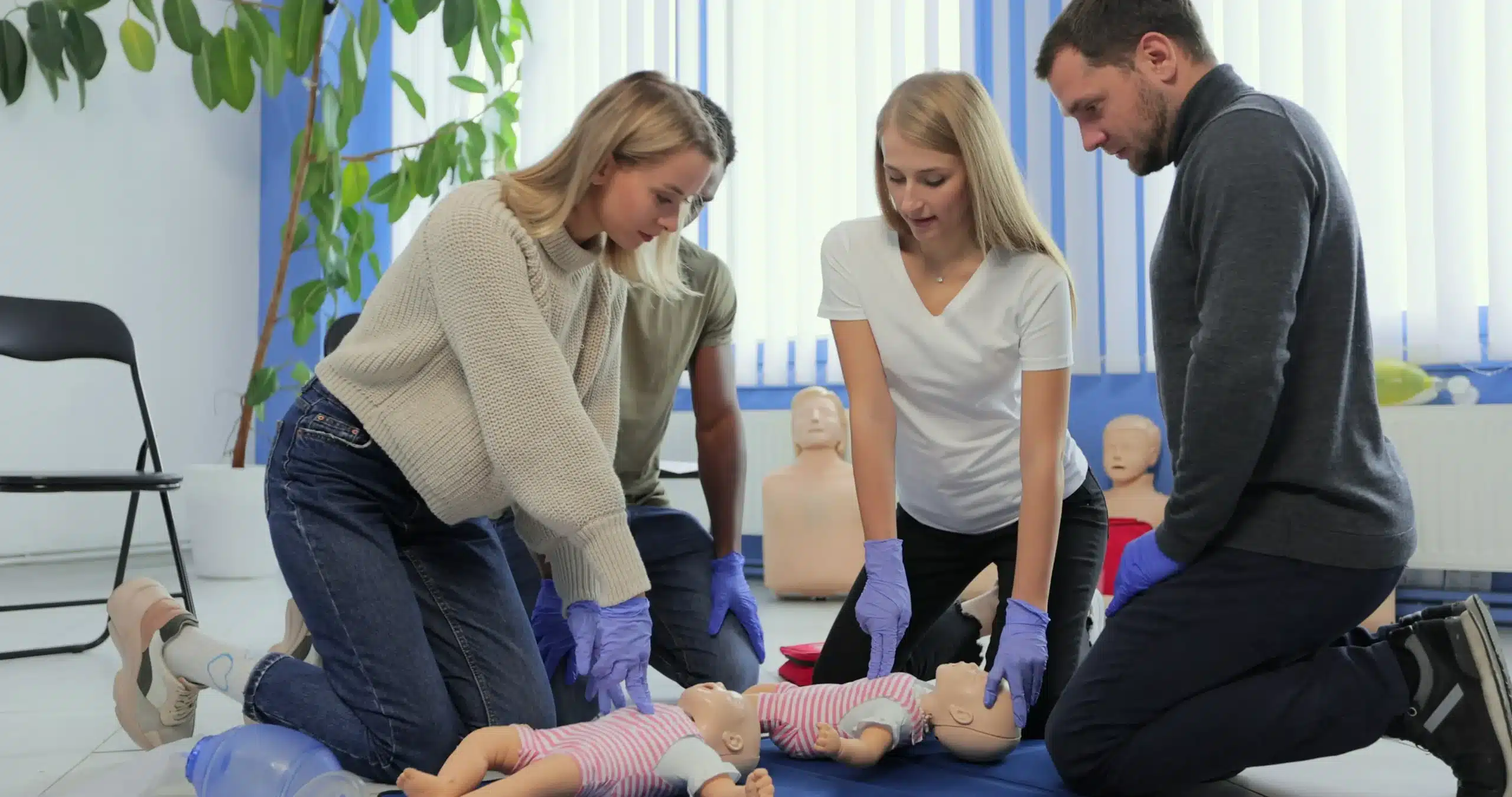Empowering yourself with life-saving skills is one of the most valuable things you can do. CPR is a fundamental skill that can make a profound difference in a medical emergency. This guide will provide a comprehensive overview of CPR, from its basic principles to the various certification options available. We’ll explore the different types of cpr classes in Oakland, helping you choose the right course based on your individual needs and professional goals. We’ll also address common questions about CPR training, including costs, certification validity, and what to expect during a class. Let’s equip you with the knowledge and confidence to act quickly and effectively when it matters most.
Key Takeaways
- CPR training empowers you to save lives: Learning CPR, whether for personal or professional reasons, equips you with the skills to respond effectively in medical emergencies. Find a course that aligns with your needs and schedule.
- Choose the right CPR class for your goals: Consider factors like your learning style (in-person vs. online), required certification level (basic or advanced), and the reputation of the training center. Look for hands-on practice and updated AHA guidelines.
- Maintain your CPR skills for long-term effectiveness: CPR certifications typically expire after two years. Stay current with the latest guidelines and refresh your skills through recertification courses to ensure you’re always prepared.
What is CPR and Why is it Important?
Learning CPR can empower you to save a life. But before you sign up for a class, it’s helpful to understand some basic facts about this life-saving technique.
What is CPR?
CPR (Cardiopulmonary Resuscitation) is an emergency procedure used when someone’s breathing or heartbeat has stopped. This can happen due to a heart attack, near drowning, or other life-threatening situations. CPR involves chest compressions and, sometimes, rescue breaths. These techniques help maintain blood flow to the brain and other vital organs until professional medical help arrives. Find CPR classes in Oakland at Safety Training Seminars. CPR doesn’t require extensive medical training, and learning the basics can make a real difference in an emergency.
Common CPR Training Misconceptions
Several misconceptions about CPR training can prevent people from learning this essential skill. Let’s clear up a few:
- Myth 1: CPR restarts a stopped heart. CPR primarily maintains blood circulation. While it can help restart a heart, its main purpose is to keep oxygenated blood flowing to vital organs until emergency medical services arrive. This misconception can lead to delayed action, so understanding the true purpose of CPR is crucial.
- Myth 2: CPR always revives someone. Sadly, this isn’t true. While CPR significantly increases the chances of survival, it doesn’t guarantee revival. Many factors influence the outcome of a cardiac arrest. However, providing CPR promptly can buy valuable time and improve the odds of a positive outcome. Learn more in a BLS class.
- Myth 3: CPR requires extensive medical training. Anyone can learn CPR. Certified instructors teach straightforward techniques that people of all backgrounds can master. Check out these basic life support classes to get started.
- Myth 4: It’s easy to injure someone while performing CPR. While there’s a small risk of rib fractures during CPR, doing something is always better than doing nothing when someone’s life is at stake. High-quality CPR classes teach you the proper techniques to minimize any potential harm while maximizing the effectiveness of the procedure. Fear of making a mistake shouldn’t stop you from learning this life-saving skill.
CPR Classes in Oakland
CPR classes equip you with the skills to respond to medical emergencies and potentially save a life. Different types of CPR training cater to various needs and professional levels. Here’s a breakdown of the CPR classes available in Oakland:
Basic Life Support (BLS)
BLS certification is the foundation for healthcare providers and other professionals who may need to respond to cardiac or respiratory arrest. BLS training covers core skills like chest compressions, rescue breaths, and using an AED. Safety Training Seminars offers American Heart Association BLS courses, ensuring you receive high-quality instruction. These skills are essential for anyone working in healthcare, and BLS certification is often a job requirement.
Advanced Cardiac Life Support (ACLS)
ACLS certification goes beyond the basics of BLS, focusing on advanced techniques for managing cardiovascular emergencies. This course is designed for healthcare professionals, including physicians, nurses, and paramedics, who are part of a team responding to these critical situations. Safety Training Seminars provides ACLS courses in Oakland, giving you the knowledge and practice to handle complex medical emergencies.
Pediatric Advanced Life Support (PALS)
When a child faces a medical emergency, specialized care is crucial. PALS training focuses on the specific needs of infants and children, teaching healthcare providers how to respond effectively to pediatric emergencies. This course covers everything from respiratory distress to cardiac arrest in young patients. Safety Training Seminars offers PALS certification in Oakland, empowering you to provide the best possible care for children in crisis.
Neonatal Resuscitation Program (NRP)
The first few minutes of a newborn’s life can be critical. NRP certification prepares healthcare professionals to handle resuscitation and stabilization of newborns. This specialized training covers techniques specific to the unique needs of neonates, ensuring they receive immediate and appropriate care. Contact Safety Training Seminars to learn more about NRP courses in the Oakland area.
First Aid and CPR
Combining first aid and CPR training provides a well-rounded skill set for responding to various emergencies. From minor injuries to life-threatening situations, this comprehensive training prepares you to act quickly and confidently. Whether you’re a parent, caregiver, or simply want to be prepared, learning both first aid and CPR can make a significant difference. CPR Certification Oakland offers combined courses, making it convenient to gain these essential skills.
Where to Find CPR Classes in Oakland
Finding the right CPR class can feel overwhelming with so many options. This section breaks down some of the leading providers in Oakland, so you can choose the best fit for your needs.
Safety Training Seminars
Safety Training Seminars offers a comprehensive range of American Heart Association courses, including BLS, ACLS, PALS, and NRP. They focus on providing high-quality instruction at competitive prices, with a commitment to excellent customer service. Serving Alameda, Oakland, and Berkeley, they offer convenient class schedules and group discounts. For those seeking affordable options, their low price guarantee ensures you’re getting the best value.
American Heart Association
While the American Heart Association doesn’t directly teach classes, they set the standards for CPR training. Look for a certified AHA Training Center like Safety Training Seminars to ensure your instruction meets these rigorous guidelines. This guarantees your certification will be widely recognized and accepted.
American Red Cross
The American Red Cross is another well-known provider of CPR and first aid training. They offer a variety of courses for individuals and organizations, including specialized programs for schools and workplaces. Check their website for class schedules and locations in Oakland.
CPR Certification Oakland
CPR Certification Oakland provides AHA-certified CPR and first aid classes in Oakland and surrounding Bay Area locations. They offer flexible scheduling, including on-site training for groups. This can be a convenient option for businesses or community organizations looking to train multiple people at once.
Local Hospitals and Medical Centers
Many local hospitals and medical centers in Oakland also offer CPR and first aid classes. Check with hospitals in your area for course offerings and schedules. These classes are often taught by experienced medical professionals, providing valuable real-world insights.
What Happens in a CPR Class?
Wondering what to expect in a CPR class? It’s a blend of learning and hands-on practice designed to equip you with the skills to save a life. Let’s break down the typical CPR class experience.
Course Format and Duration
CPR classes cater to diverse needs, from individuals and healthcare professionals to schools and workplaces aiming to meet OSHA requirements. You can usually choose between in-person classes and blended learning, which combines online coursework with in-person skills sessions. Most CPR courses run for approximately three hours, making them a manageable time commitment. Safety Training Seminars offers a variety of CPR courses to fit your schedule and learning preferences. We offer American Heart Association courses such as BLS, ACLS, and PALS.
Key Topics
CPR classes cover essential life-saving procedures for both adults and children. Expert instructors guide you through the curriculum, using up-to-date information. You’ll learn to recognize when CPR is needed and how to perform it effectively. Core topics include chest compressions, rescue breaths, and how to use an Automated External Defibrillator (AED). For those interested in specialized training, we also offer the NRP course through the American Academy of Pediatrics.
Hands-on Practice and Equipment
Hands-on practice is a crucial part of CPR training. You’ll work with realistic training mannequins to develop the muscle memory and confidence to administer effective chest compressions. This practice helps you understand the correct hand placement and the appropriate depth and force required. Small class sizes at Safety Training Seminars ensure personalized attention and ample opportunity for practice. Contact us to learn more about our class sizes and schedules.
Getting Certified
Upon successful completion of the course, you’ll receive your CPR certification card the same day. These certifications are typically valid for two years, after which you can easily renew your certification through a refresher course. This ensures your skills remain sharp and up-to-date. Safety Training Seminars makes it easy to stay current with your certifications.
CPR Class Costs & Value in Oakland
Knowing the price of CPR certification and understanding its inherent value are key factors when choosing a course. Let’s break down the costs associated with CPR training in Oakland and explore why this knowledge is a worthwhile investment.
Course Pricing
CPR certification costs vary depending on the level of training and the provider. In Oakland, you can find CPR classes for around $65, while combined CPR and First Aid training is typically around $85. These prices are competitive and reflect the value of the lifesaving skills you’ll gain. Remember, investing in your training is an investment in your community’s safety. More advanced certifications like ACLS and PALS will typically have higher price points due to the specialized nature of these courses. Safety Training Seminars offers a range of AHA-certified courses to meet your specific needs and budget.
Group Discounts and Deals
Many training centers, including Safety Training Seminars, offer discounts for group classes. This is a great option for businesses, community organizations, or even groups of friends who want to learn CPR together. Contacting providers directly to discuss group rates is a smart way to save money while ensuring everyone receives this essential training. Some providers also offer occasional promotions, so it’s always worth checking their websites or social media for current deals.
Safety Training Seminars’ Price Guarantee
Safety Training Seminars is committed to providing high-quality, affordable CPR training. As a woman-owned and operated AHA Training Center, they strive to keep their prices competitive while maintaining high standards. Check their website for their low price guarantee and see how they can offer you the best value for your training investment.
Benefits of CPR Certification
The benefits of CPR certification extend far beyond the classroom. These skills empower you to respond effectively in medical emergencies, potentially saving lives. CPR and First Aid training provides you with the knowledge and confidence to assist someone experiencing cardiac arrest, choking, or other life-threatening situations. Holding an AHA certification also demonstrates your commitment to professional development and enhances your resume, especially in healthcare and childcare fields. Knowing you’re prepared for emergencies brings peace of mind to you, your family, and your community.
Choose the Right CPR Class
Finding the perfect CPR class depends on a few factors. Think about why you’re taking the class, how you learn best, and if you need any specialized certifications. This will help you narrow down your options and choose the right fit.
Professional vs. Personal Needs
Are you getting certified for your job, or to be prepared for emergencies at home? This is a key question to ask yourself. If it’s for a job in healthcare, you’ll likely need an American Heart Association (AHA) certification like BLS, ACLS, or PALS. Safety Training Seminars offers these courses in Oakland, catering to various professional needs. For personal knowledge or to meet requirements for certain volunteer positions, a basic CPR and First Aid certification might be enough. CPR Certification Oakland is a great resource for finding classes that meet these needs.
In-Person vs. Online Options
Consider your learning style when deciding between in-person and online CPR classes. Hands-on learners often benefit from the in-person experience, allowing for direct interaction with instructors and practice on mannequins. The Red Cross offers both in-person and blended learning options, combining online coursework with essential hands-on skills sessions. While online courses can be more convenient, they may not provide the same level of practical training. Think about what will help you learn best.
Specialized Training
Some professions require specialized training beyond basic CPR. For healthcare providers, advanced certifications like ACLS (Advanced Cardiac Life Support) or PALS (Pediatric Advanced Life Support) may be necessary. Safety Training Seminars offers these specialized courses in Oakland. The Red Cross also provides resources for specific groups, such as first aid training and programs for educators to create safer school environments. Identifying your specific needs will help you find the right training program.
CPR Certification: Process & Validity
Once you’ve completed your CPR training, you’ll want to understand the certification process and how long your certification is valid. Here’s what you need to know:
Exams and Assessments
CPR certification typically involves a skills test and a written exam. The skills test allows you to demonstrate techniques like chest compressions and rescue breaths. The written exam assesses your understanding of CPR principles and protocols. Both the American Heart Association (AHA) and the American Red Cross offer CPR/AED and First Aid certifications for adults, children, and infants, with online and in-person options. Safety Training Seminars uses the AHA curriculum, giving you a widely recognized certification.
How Long is Certification Valid?
AHA certifications remain valid for two years. This timeframe reflects the evolving nature of best practices in CPR. Staying current with the latest guidelines ensures you provide the most effective care in an emergency.
Renewing Your Certification
It’s essential to renew your CPR certification every two years. Renewal courses cover updates to CPR guidelines and refresh your skills. At Safety Training Seminars, the same comprehensive course works for both initial certification and renewal, making the process simple.
Get Ready for Your CPR Class
So, you’ve signed up for a CPR class—fantastic! Knowing this life-saving skill can make a real difference. To make the most of your upcoming training, here are a few tips to help you prepare.
What to Bring and Wear
Comfort is key for a CPR class. Wear clothing that allows you to move freely since you’ll be practicing techniques like chest compressions and rescue breaths. Closed-toe shoes are a must for safety during the hands-on portions of the class. You don’t want anything to restrict your movement or put you at risk while you’re learning.
Pre-course Prep
While not required, reviewing some basic CPR techniques beforehand can boost your confidence and help you absorb the information more easily during the class. Many organizations, like the American Heart Association, offer online resources. Even a quick overview can familiarize you with the core concepts. Taking a CPR class ensures you’re properly trained to use this technique effectively, and pre-class prep can give you a head start. Check out these common misconceptions about CPR certification to get a better understanding of the process.
Physical and Mental Readiness
CPR can be physically demanding, but don’t worry, the class instructors will guide you through the proper techniques. More importantly, be mentally prepared to perform CPR in a real emergency. It can be stressful, but hands-on practice during the class will build your confidence and address any concerns about performing CPR correctly. Knowing the basics and having practiced the techniques will help you react calmly and effectively under pressure. Review some of the myths about learning CPR to further ease your mind.
After CPR Training: Next Steps
Completing your CPR training is a significant achievement. But your journey doesn’t end there. Here’s how to make the most of your new skills:
Using Your CPR Skills
CPR training equips you to respond effectively in emergencies. Remember, CPR keeps oxygenated blood flowing to vital organs until paramedics arrive. While we hope you never need these skills, being prepared can make all the difference. Familiarize yourself with CPR protocols and refresh your knowledge periodically. Consider how you might react in different emergency scenarios and mentally rehearse the steps. This mental preparation can build your confidence and improve your response time in a real emergency.
Staying Up-to-Date
CPR guidelines and best practices can change. Your certification is typically valid for two years, so staying current is essential. Explore convenient recertification options to maintain your skills and learn about any updates. Check with providers like Safety Training Seminars for upcoming renewal courses. Consider setting a reminder to avoid letting your certification expire. Knowing the typical CPR class cost helps you budget for recertification.
Encourage Others
Sharing your experience can inspire others to learn CPR. Many hesitate due to common misconceptions. Help debunk these CPR myths and encourage your friends, family, and colleagues to get certified. Share information about local CPR classes or organize a group training through Safety Training Seminars’ group discounts. Spreading CPR awareness creates a safer community.
CPR Class FAQs
Here are some answers to common questions about CPR classes:
How long does a CPR class take?
The time commitment for a CPR class varies. Basic CPR instruction typically lasts a few hours, while more comprehensive certification courses can range from four to eight hours. Classes covering first aid and AED use will take longer.
How long is CPR certification valid?
CPR certifications are typically valid for two years, though this can depend on the specific course and certifying organization. It’s essential to keep your certification current. For more information, review the details about our certification process.
What types of CPR classes are available in Oakland?
We offer a variety of American Heart Association (AHA)-certified courses, including BLS, ACLS, PALS, and NRP. We also offer First Aid training, EMSA Child Care Health & Safety courses, and discounts for group classes.
Are online CPR classes effective?
While online CPR classes offer a convenient introduction, in-person training is crucial for developing the essential hands-on skills and muscle memory needed to perform CPR effectively. Our instructors prioritize hands-on learning to prepare you for real-life emergencies.
Why is CPR training important?
CPR training equips you to respond confidently during medical emergencies. Learning and maintaining your CPR skills can be life-saving for someone experiencing cardiac arrest. Explore our courses to find the best fit for your needs.
Related Articles
- Why CPR is Important in Healthcare – Oakland CPR Classes
- Why CPR is Crucial in Healthcare
- The Importance of Workplace CPR & First-Aid Training
- CPR Myths Exposed: Truth Behind Common Misconceptions
- CPR Classes in Alameda: Your Complete Guide – Oakland CPR Classes
CPR Class FAQs
How long does it take to get CPR certified?
CPR class duration varies depending on the type of certification. Basic CPR and First Aid classes often take a few hours, while more advanced certifications like ACLS and PALS require a longer time commitment. Check the specific course details for more information. Safety Training Seminars offers a range of courses to fit your schedule.
What’s the difference between BLS, ACLS, and PALS?
BLS (Basic Life Support) teaches fundamental CPR skills for anyone. ACLS (Advanced Cardiac Life Support) is for healthcare professionals managing complex cardiac emergencies. PALS (Pediatric Advanced Life Support) focuses on the specific needs of infants and children during emergencies. Safety Training Seminars offers all these courses.
How much do CPR classes cost?
CPR class costs depend on the type of certification and the training provider. Basic CPR classes are generally more affordable than advanced certifications. Look for providers like Safety Training Seminars who offer competitive pricing and group discounts. Check our website for our low price guarantee.
How often do I need to renew my CPR certification?
Most CPR certifications are valid for two years. Renewing your certification ensures you stay up-to-date with the latest guidelines and best practices. Safety Training Seminars offers convenient renewal courses.
What if I’m nervous about performing CPR in a real emergency?
It’s normal to feel apprehensive. Our CPR classes emphasize hands-on practice to build confidence and muscle memory. This practical experience helps you react calmly and effectively under pressure. Our instructors create a supportive learning environment to address any concerns.


